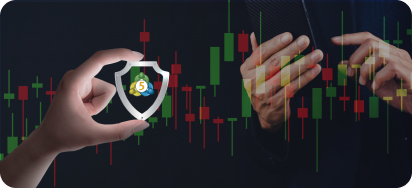What is inflation and how to protect assets in 2025
“Boss, the egg pancake went up by 5 dollars again?” Walking into a breakfast shop on the streets of Taipei, price hikes have become a daily conversation. According to the latest IMF (International Monetary Fund) World Economic Outlook, the global inflation rate is projected to reach 4.3% in 2025 and decline to 3.6% in 2026. Moreover, inflation expectations in developed economies have been significantly revised upward. These figures exceed the widely accepted “healthy” inflation range of 1% to 3%, with an average around 2%, as viewed by economists. This suggests that inflation remains a major concern for global investors and consumers alike.
In such an environment, traditional savings methods—such as bank time deposits—offer interest rates around only 1.5%, causing a steady decline in real purchasing power and resulting in a “negative interest rate” crisis. As a result, many investors are seeking more active tools to hedge against inflation, and forex trading, with its high liquidity and two-way trading nature, has emerged as a new choice for Taiwanese investors.
What Is Inflation?
Inflation refers to the general increase in prices of goods and services over time, leading to a decline in the purchasing power of money. When inflation occurs, consumers must pay more to obtain the same quantity of goods or services. For example, if a bowl of beef noodles rises from NT$150 to NT$180 in 2025, the NT$100 in your hand can buy less—this is a straightforward reflection of inflation.
Inflation not only impacts individual living costs but also strongly influences national economic policy and the functioning of financial markets. According to the IMF, if a country’s annual inflation rate exceeds 2% for two consecutive quarters, it is considered to have entered an inflationary cycle.
Main Causes of Inflation
1. Demand-Pull Inflation
When the overall economy grows strongly and consumer purchasing power increases, demand exceeds supply in the market, leading to rising prices. This is known as demand-pull inflation.
2. Cost-Push Inflation
When the cost of raw materials, energy, or wages increases, producers pass these rising costs onto consumers, thereby driving up prices.
3. Monetary and Financial Factors
When central banks print money continuously, loosen monetary policies, or when the market expects currency depreciation, the increase in money supply in circulation can also push inflation higher.
4. External Shocks
External shocks such as the Russia–Ukraine conflict, global energy supply disruptions, or extreme weather affecting agricultural production are all external contributors to inflation.
What Are the Types of Inflation?
- Creeping Inflation: Annual inflation rate ≤ 3%; prices rise slowly and steadily, typically viewed as part of healthy economic growth.
- Galloping Inflation: When inflation exceeds 10%, prices surge rapidly over a short period, undermining consumer confidence.
- Hyperinflation: In extreme scenarios, prices rise daily, and currency value collapses—such as the historical case in Zimbabwe. Generally, inflation is classified as hyperinflation when monthly price increases exceed 50% and persist for over a year.
Understanding the types of inflation helps us respond more accurately to various market environments.
How Inflation Affects the Economy and Personal Finance
1. Trade Imbalance
Currency depreciation raises import prices, widening the trade deficit.
2. Rising Fiscal Pressure
Increased government spending—such as public wages and infrastructure costs—may worsen fiscal deficits.
3. Higher Borrowing Costs
To curb inflation, central banks often raise interest rates to tighten liquidity and cool down consumption and investment. As a result, borrowing costs for businesses and individuals increase, reducing investment appetite.
Since December 2024, the Federal Reserve has kept its benchmark interest rate steady at 4.25%–4.5% as a measure to lower economic growth expectations and suppress inflation.
4. Rising Cost of Living
The cost of essentials such as food, transportation, and housing rises, directly increasing the burden on daily life.
5. Erosion of Savings Value
Bank interest rates often fail to keep up with inflation, causing the purchasing power of cash or savings to decline over time.
6. Societal Impact: Rising Unemployment
Although inflation may accompany short-term economic expansion, interest rate hikes to suppress demand can pressure business operations and eventually trigger layoffs, leading to higher unemployment.
In 2024, global job growth roughly matched labor supply increases, keeping the unemployment rate around 5%, indicating the labor market remains under pressure during inflation control efforts.
Inflation Outlook in 2025
Current inflation conditions across major global economies:
- United States: The Federal Reserve projects the 2025 core inflation rate at 2.8%, up from the previous estimate of 2.5%, remaining above its 2% target.
- Europe: The European Central Bank forecasts headline inflation in the Eurozone at 2.3% in 2025, 1.9% in 2026, and 2.0% in 2027.
- Asia (Japan, Taiwan): Inflation is moderating. Taiwan’s Directorate-General of Budget, Accounting and Statistics estimates the full-year CPI growth rate at 1.9% for 2025.
However, geopolitical risks and climate change–related supply chain disruptions remain key variables influencing future inflation trends.
Investment Strategies to Hedge Against Inflation
As inflation exerts increasing pressure on the economy, investors must adapt their strategies to keep pace with market changes. In an inflationary environment, currency purchasing power diminishes, making asset preservation and return generation the top priorities for investors.
1. Stock Market Investment: Target Cost-Passing Companies
In an inflationary environment, rising operating costs squeeze corporate profits. However, some companies with pricing power—those able to pass increased costs to consumers—can still achieve stable earnings growth. Sectors such as energy, consumer staples, and infrastructure generally exhibit strong inflation resistance, as these businesses can raise product prices in response to higher raw material costs to maintain profit margins.
Additionally, investors may favor companies with strong brand influence and market dominance, which are better positioned to preserve their competitive edge during inflationary periods.
2. Physical Asset Investment: Gold and Real Estate
Physical assets such as gold and real estate are often the top choices for hedging against inflation. Gold is considered a “store of value” and typically appreciates when currencies depreciate. Real estate, while subject to short-term market volatility, tends to gain value over the long term in an inflationary environment—especially in cities or regions with sustained demand.
Beyond gold and real estate, other tangible assets like precious metals, oil, or raw materials may also serve as effective inflation hedges.
3. Bond Investment: Choose Short-Term and Inflation-Protected Bonds
Inflation generally impacts long-term bonds more severely, as rising interest rates cause bond prices to fall. In contrast, short-term bonds are less sensitive to interest rate changes, making them a relatively stable option.
Investors can also consider inflation-protected securities such as U.S. Treasury Inflation-Protected Securities (TIPS). These bonds adjust their principal in line with inflation, offering more stable returns during inflationary periods.
4. Forex Market Allocation: Hedging and Currency Selection
In an inflationary environment, certain currencies such as the U.S. dollar or Swiss franc are often regarded as safe-haven assets. Investors can use the forex market for hedging or strategic positioning. For instance, when domestic currency weakens due to inflation, investors may consider buying more stable foreign currencies.
Moreover, the flexibility of the forex market makes it an ideal tool for managing inflation. Through currency trading, investors can swiftly adjust their portfolios and capitalize on shifts in relative currency values.
5. Flexible Asset Allocation: Diversification Is Key
When facing inflationary challenges, relying on a single asset class may not provide adequate protection. Thus, a flexible asset allocation strategy is crucial. Investors should diversify their portfolios across equities, bonds, physical assets, and currencies, adjusting regularly according to their risk tolerance and financial goals.
Diversification helps reduce inflation risk while enhancing return potential. Especially in times of high market uncertainty, maintaining a flexible portfolio strategy can effectively mitigate inflation’s impact on asset value.
Ultima Markets Helps You Tackle Inflation Challenges
In an inflationary environment, the forex market—offering 24/7 access, high liquidity, two-way trading, and hedging potential—has become a key choice for capital preservation and growth. Investors can flexibly manage positions to hedge against local currency depreciation while using leverage to amplify profit potential, effectively countering the erosion of purchasing power caused by inflation. In a highly volatile market, choosing a reliable platform is crucial. Ultima Markets offers investors:
- Top-tier trading conditions: ultra-low spreads and leverage up to 1:2000 for greater trading flexibility.
- Multi-platform support: full coverage through MT4, MT5, WebTrader, and the Ultima Markets App for convenient trading anytime, anywhere.
- Fund security: client funds are strictly segregated from company funds and held in Westpac Bank, Australia.
- Robust technical analysis: integrated with Trading Central to help you stay on top of market trends with ease.
- Exclusive compensation fund: as a member of The Financial Commission, Ultima Markets offers up to €20,000 in dedicated client protection.
- 24/7 Chinese-language support: prompt assistance and real-time market consultation whenever you need it.
Conclusion
With inflationary pressure persisting globally and significantly impacting both economic growth and personal finance, understanding the causes, types, and market effects of inflation is more critical than ever. Through adaptive strategies such as forex trading, investors can effectively hedge against currency depreciation, manage risk, and pursue asset growth. Choosing a forex broker like Ultima Markets—with strong fund protection, a professional trading platform, and comprehensive educational support—can help you navigate inflationary markets with confidence and seize more potential opportunities.







![[MetaTrader 5 Mobile Trading Complete Guide] 7 Key Advantages for Real-Time Market Access](https://www.ultimamarkets.com/wp-content/uploads/2025/04/mt5_mobile_trading_card.jpg)
















